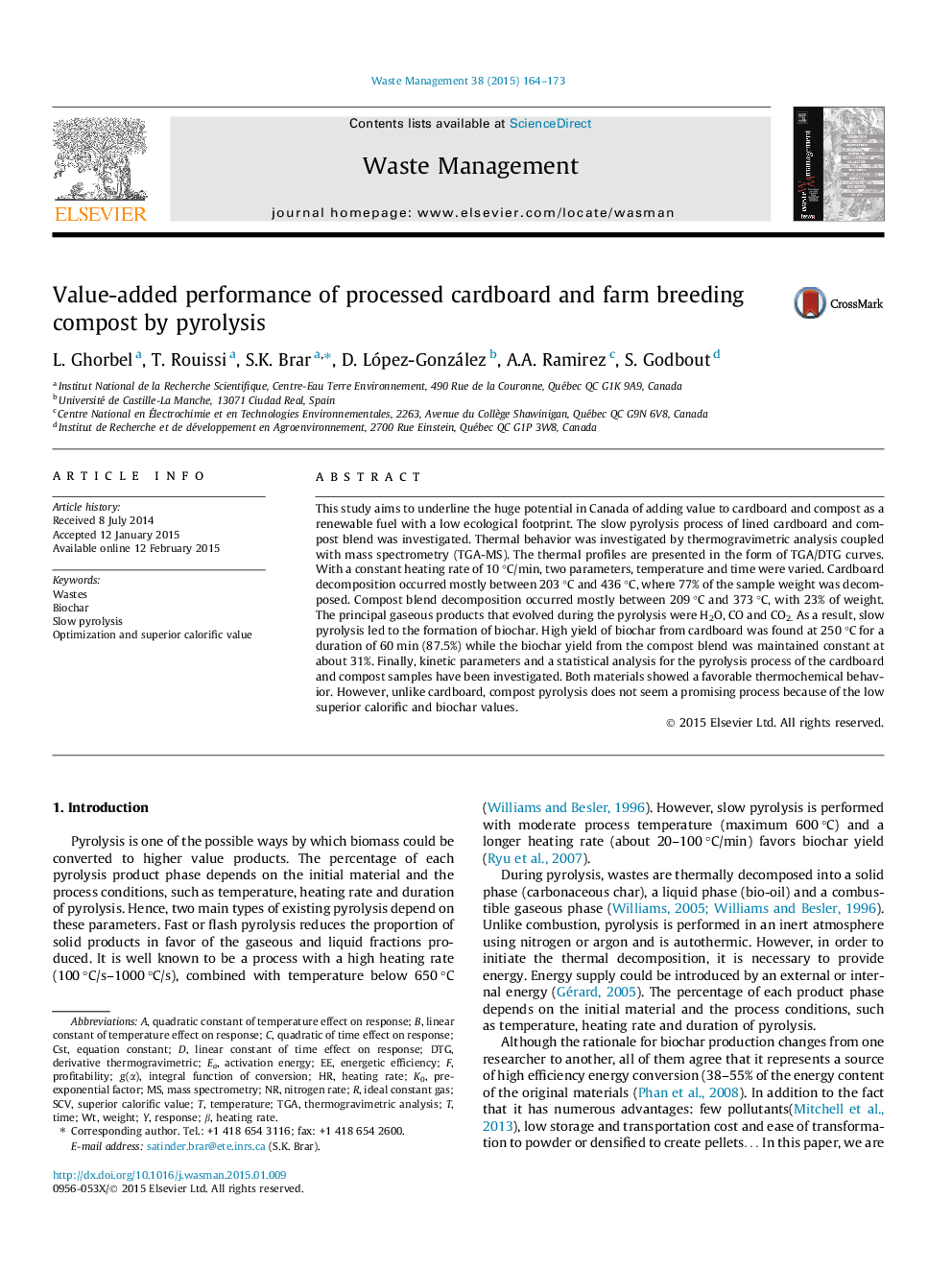| کد مقاله | کد نشریه | سال انتشار | مقاله انگلیسی | نسخه تمام متن |
|---|---|---|---|---|
| 4471402 | 1622647 | 2015 | 10 صفحه PDF | دانلود رایگان |
• Pyrolysis process was optimized for cardboard and farm compost.
• TGA-MS analysis was performed for detailed energy balance of the pyrolysis.
• Cardboard pyrolysis was found to be an efficient value-addition method due to high superior calorific and biochar values.
This study aims to underline the huge potential in Canada of adding value to cardboard and compost as a renewable fuel with a low ecological footprint. The slow pyrolysis process of lined cardboard and compost blend was investigated. Thermal behavior was investigated by thermogravimetric analysis coupled with mass spectrometry (TGA-MS). The thermal profiles are presented in the form of TGA/DTG curves. With a constant heating rate of 10 °C/min, two parameters, temperature and time were varied. Cardboard decomposition occurred mostly between 203 °C and 436 °C, where 77% of the sample weight was decomposed. Compost blend decomposition occurred mostly between 209 °C and 373 °C, with 23% of weight. The principal gaseous products that evolved during the pyrolysis were H2O, CO and CO2. As a result, slow pyrolysis led to the formation of biochar. High yield of biochar from cardboard was found at 250 °C for a duration of 60 min (87.5%) while the biochar yield from the compost blend was maintained constant at about 31%. Finally, kinetic parameters and a statistical analysis for the pyrolysis process of the cardboard and compost samples have been investigated. Both materials showed a favorable thermochemical behavior. However, unlike cardboard, compost pyrolysis does not seem a promising process because of the low superior calorific and biochar values.
Journal: Waste Management - Volume 38, April 2015, Pages 164–173
